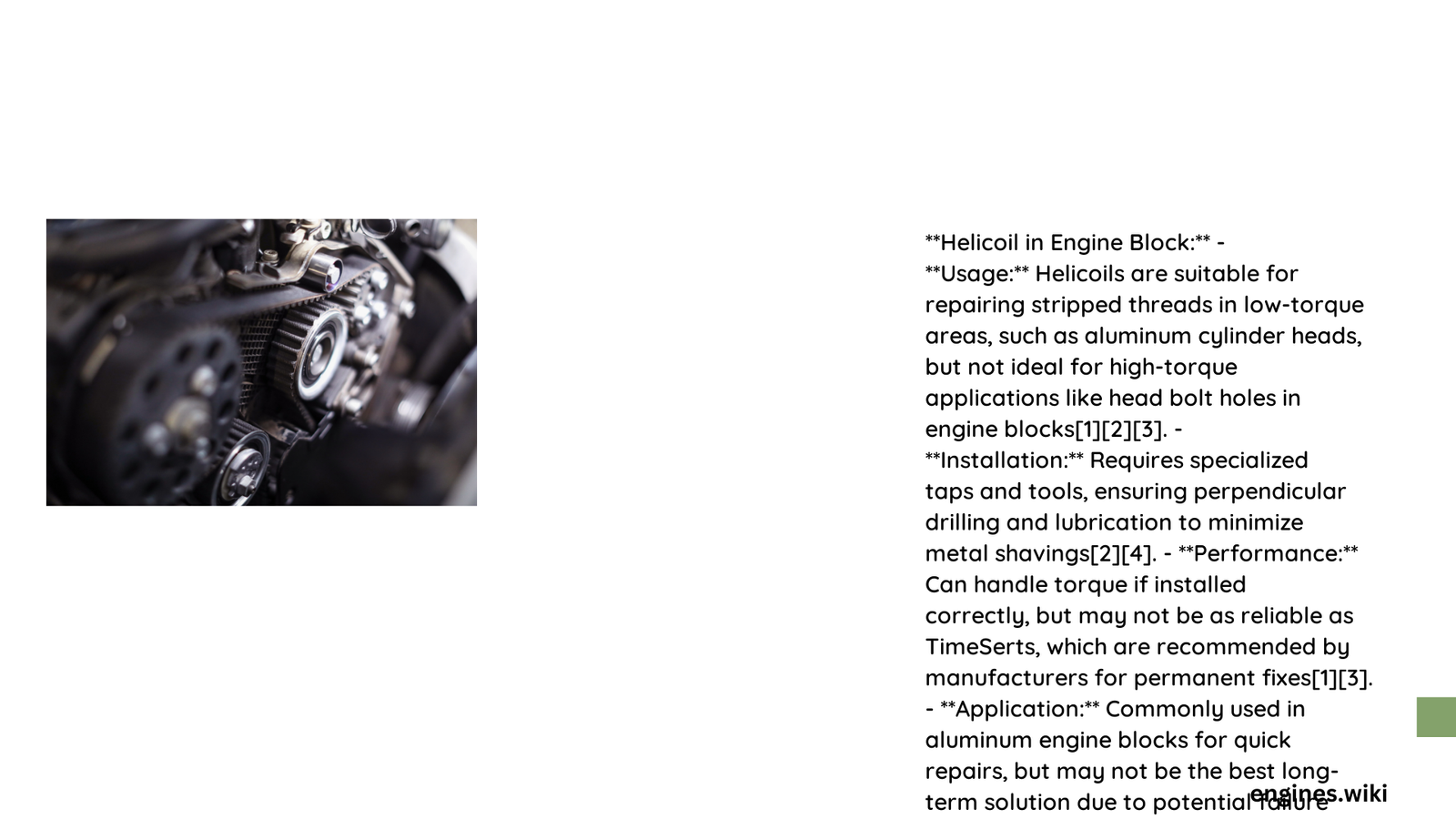Helicoil thread repair is a critical technique for restoring damaged threads in engine blocks, offering a reliable solution when original threads become stripped or worn. This specialized method involves inserting a threaded metal insert to recreate precise thread engagement, ensuring structural integrity and preventing potential engine failure. Mechanics and automotive professionals rely on helicoil technology to salvage expensive engine components without complete replacement.
What Makes Helicoil Essential for Engine Block Repair?
Helicoil provides a robust thread repair solution that addresses several critical challenges in engine maintenance:
Structural Restoration Capabilities
- Rebuilds damaged thread surfaces
- Provides stronger thread engagement
- Prevents further thread deterioration
- Maintains original bolt hole specifications
Material Compatibility
Helicoil inserts work effectively across multiple engine block materials:
| Material Type | Helicoil Performance |
|---|---|
| Cast Iron | Excellent thread restoration |
| Aluminum | Superior thread reinforcement |
| Composite Alloys | Reliable thread reconstruction |
What Tools Are Required for Helicoil Installation?

Essential tools for successful helicoil installation include:
- Precision drill
- Thread tap
- Helicoil installation kit
- Torque wrench
- Safety equipment
- Protective eyewear
- Work gloves
- Respiratory protection
How to Prepare the Engine Block for Helicoil?
Preparation involves meticulous surface preparation and assessment:
- Cleaning: Remove all debris and old thread remnants
- Inspection: Evaluate thread damage extent
- Measurement: Determine precise hole diameter
- Surface Treatment: Apply cutting oil for smooth thread cutting
What Are the Step-by-Step Helicoil Installation Procedures?
Drilling Process
- Select appropriate drill bit size
- Create centered pilot hole
- Maintain perpendicular drilling angle
- Control drilling depth carefully
Thread Tapping
- Use manufacturer-recommended tap
- Apply consistent rotational pressure
- Clear metal shavings periodically
- Ensure clean, uniform thread cutting
Helicoil Insertion
- Choose correct insert length
- Wind insert using specialized tool
- Ensure flush surface alignment
- Break off excess tang material
What Potential Challenges Might Occur During Helicoil Installation?
Potential complications include:
– Misaligned drilling
– Incorrect tap size
– Insufficient thread depth
– Material compatibility issues
How to Prevent Future Thread Damage?
Preventative strategies:
– Use correct torque specifications
– Apply thread-locking compounds
– Regular maintenance inspections
– Choose high-quality fasteners
Technical Specifications for Helicoil Selection
Recommended selection criteria:
– Thread pitch
– Material composition
– Load-bearing requirements
– Environmental conditions
Torque Recommendations
| Engine Block Material | Maximum Recommended Torque |
|---|---|
| Aluminum | 8-12 Nm |
| Cast Iron | 12-18 Nm |
| Composite | 6-10 Nm |
Conclusion
Helicoil technology represents a sophisticated solution for thread repair, offering automotive professionals a reliable method to restore engine block integrity efficiently and cost-effectively.
